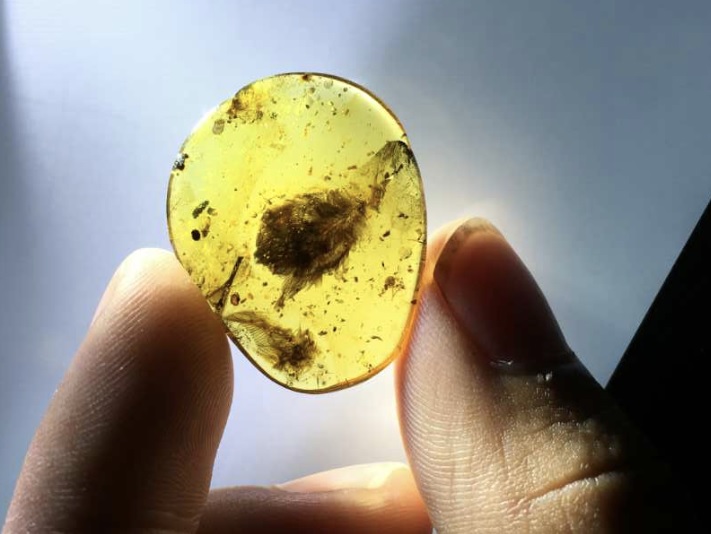Many birds survived the extinction of the dinosaurs, but not all. Some went extinct along with the non-avian dinosaurs, and scientists aren’t sure why. When an asteroid hit the Earth, tossing up dust into the sky, why did some winged creatures survive while others fell by the wayside?
A pair of new studies, based in part on the discovery of ancient baby bird feathers preserved in amber, suggest that a major factor lies in how the different bird groups molted.
Two Different Types of Baby Bird
Feathers are made of a protein called keratin, the same found in human hair and nails, but unlike those two, feathers are unable to regenerate. That means birds must shed old feathers and regrow new ones as needed – they must molt.
The process begins when the bird is a baby and follows one of two courses: “Altricial” birds are born naked and then grow feathers before molting simultaneously, or all at once, completely shedding the old set to make way for a new one. And “precocial” birds hatch with feathers and later molt slowly, replacing one feather at a time. Ducks and other aquatic birds often have all-at-once molting because they have other means to find food and avoid predators.
The amber from Burma appeared to contain feathers related to simultaneous molting – the 99-million-year-old specimens were all at about the same stage of development and had apparently detached as a group. The discovery partially confirmed a suspicion held by scientists, that ancient birds molted less frequently than their modern-day counterparts. The amber also presented a mystery.
Molting In a Hurry
Paleontologist Jingmai O’Connor had classified the trapped feathers as belonging to an extinct “enantiornithine” bird, but her previous research had found this group to be highly precocial. The discovery complicated her view of the birds, and it meant that their young would have had little protection after the asteroid.
“Enantiornithines were the most diverse group of birds in the Cretaceous, but they went extinct along with all the other non-avian dinosaurs,” says O’Connor in a statement. “When the asteroid hit, global temperatures would have plummeted and resources would have become scarce, so not only would these birds have even higher energy demands to stay warm, they didn’t have the resources to meet them.”
Evidence From Modern-Day Birds
The amber specimen may also help to explain why O’Connor and other scientists so rarely find evidence of molting in fossils. Could rapid molting be to blame?
To test this hypothesis with modern-day specimens, O’Connor and researcher Yosef Kiat examined 600 bird skins at the Field Museum and found plenty evidence of slow molting but “hardly any” of the rapid type.
Rapid molting may have hid itself in the fossil record after driving many species to extinction.
“I don’t think there’s any one particular reason why the crown birds – the group that includes modern birds – survived,” O’Connor says. “I think it’s a combination of characteristics. But I think it’s becoming clear that molt may have been a significant factor in which dinosaurs were able to survive.”
Read More: The End of Dinosaurs: The End-Cretaceous Mass Extinction














